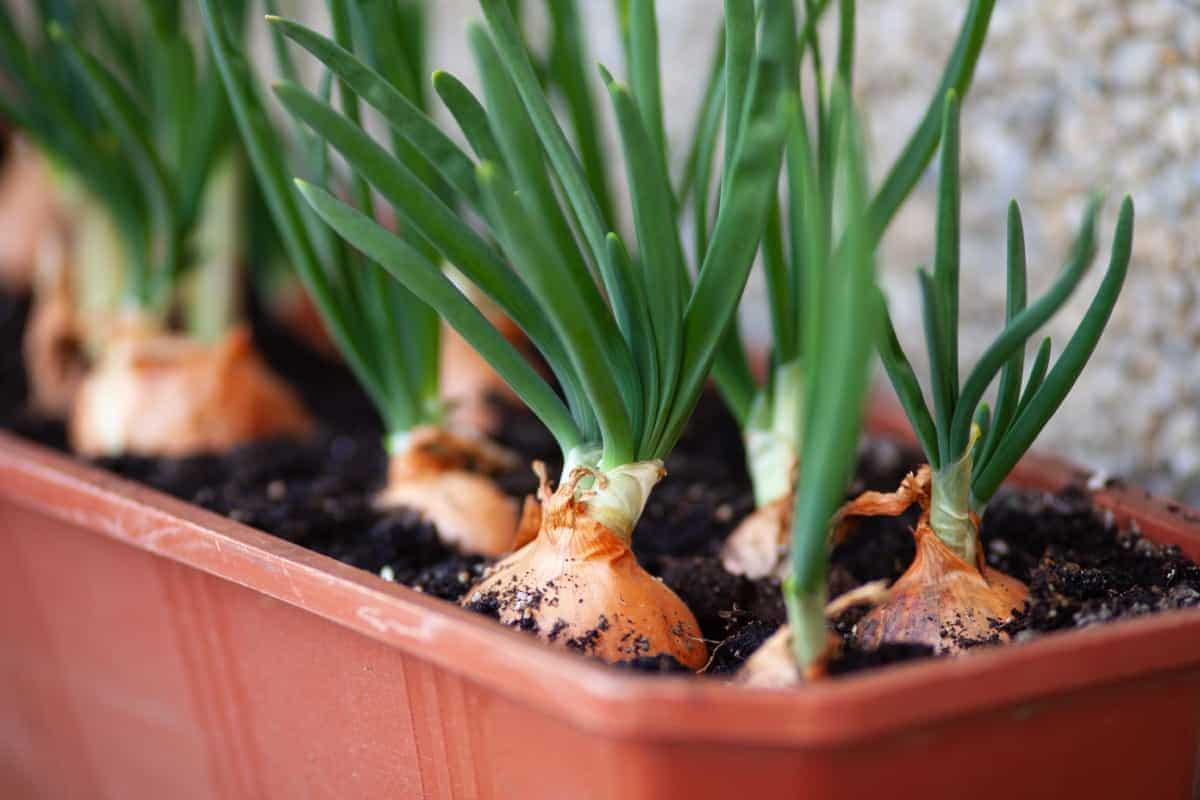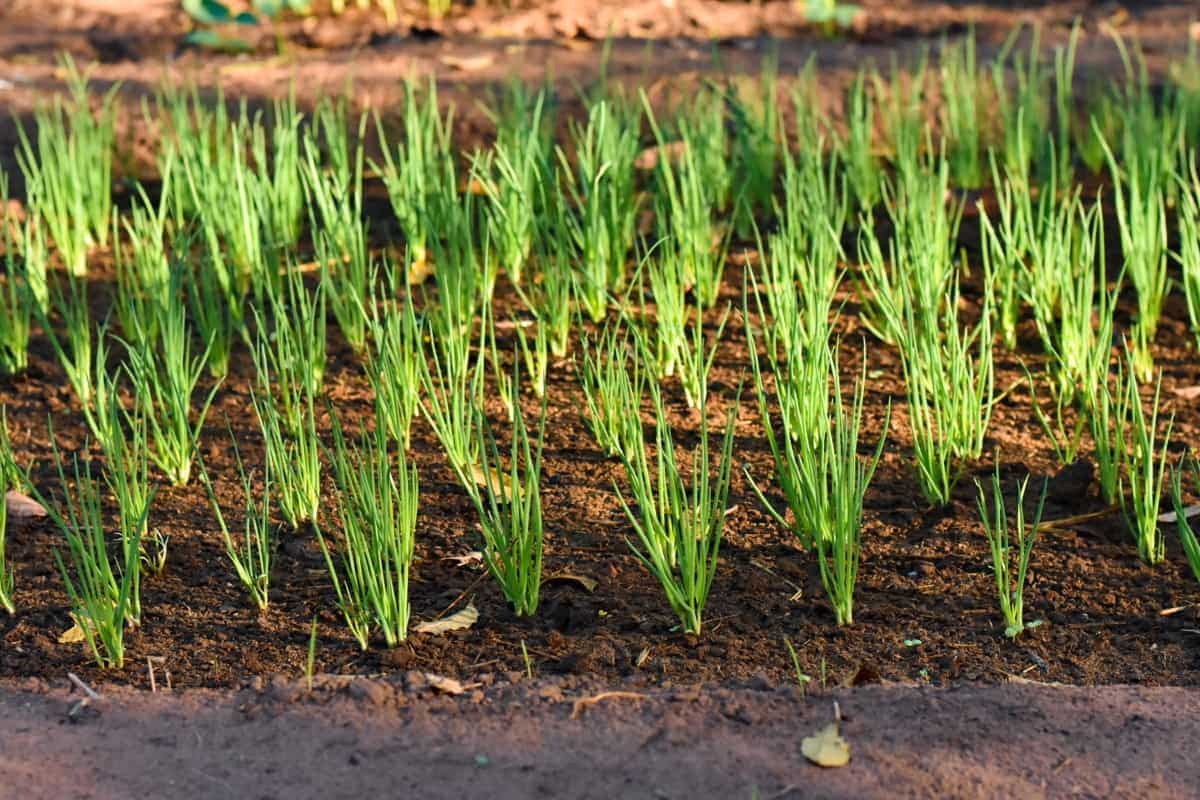Welcome to our comprehensive guide on organic solutions for onion pests and diseases. If you’re an avid gardener or a lover of organic produce, you understand the importance of protecting your crops naturally. Onions, a staple in many cuisines, are prone to various pests and diseases that hinder their growth and yield. Fortunately, effective organic methods can combat these issues without relying on harsh chemicals. This blog will explore ten organic solutions to help you maintain healthy onion plants and ensure a bountiful harvest.

Common Onion Pests and Diseases: Symptoms and Damage
- Damping off: This fungal disease affects onion seedlings, causing them to rot at the base of the stem and eventually collapse.
- Purple blotch: A fungal infection characterized by purple spots on onion leaves, leading to leaf withering and reduced bulb growth.
- Stemphylium leaf blight: A fungal disease that causes elongated brown lesions on onion leaves, eventually resulting in leaf death and reduced bulb quality.
- Colletotrichum blight/anthracnose/twister disease: A fungal infection causing sunken lesions on leaves and bulbs, leading to rotting and deformation.
- Fusarium basal rot/basal rot: A fungal disease affecting onion bulbs, causing them to decay from the base, resulting in wilting and stunted growth.
- White rot (Sclerotial rot): A fungal infection that causes white, fluffy growth and decay of onion bulbs, leading to plant death.
- Pink root rot: A fungal disease characterized by pink discoloration and decay of onion roots, resulting in reduced bulb development.
- Black mold: A fungal infection causing black, fuzzy growth on onion bulbs and leaves, leading to rot and deterioration.
- Bacterial soft rot: A bacterial disease that causes soft, watery decay in onion bulbs, often accompanied by a foul odor.
- Iris yellow spot disease: A viral infection resulting in yellowish-green lesions with dark brown centers on onion leaves, reducing yield.
- Onion yellow dwarf disease: A viral infection causing stunted growth, yellowing, and bulb deformities in onion plants.
- Downy mildew: A fungal disease characterized by grayish-white fuzz on onion leaves, leading to yellowing, defoliation, and reduced bulb size.
- Green mold: A fungal infection causing green, fuzzy growth on onion bulbs and leaves, leading to decay and reduced quality.
Common Onion Insect Pests
- Onion thrips: Small insects that feed on onion leaves, causing silver-gray patches and reducing plant vigor.
- Onion maggot: Larvae of this fly species feed on onion roots, leading to wilting, stunted growth, and bulb damage.
- Bulb mites: Tiny mites that infest onion bulbs, causing brown discoloration, reduced bulb size, and impaired growth.
- Eriophyid mites: Microscopic mites that damage onion leaves, resulting in curling, distortion, and reduced yield.
- Red spider mite: These mites suck sap from onion leaves, causing yellowing, webbing, and overall plant decline.
How to Control Onion Diseases
Black Mold
- Caused by Aspergillus niger fungus, black mold appears as black streaks on the onion neck after harvest or during storage.
- Prevention: Clean the garden bed after each harvest, ensure proper soil drainage, avoid onion punctures, and cure onions before storage. Use damaged onions immediately.
Purple Blotch
- Caused by Alternaria porri fungus, purple blotch manifests as small tan spots with purple margins and a yellow zone on leaves and bulbs.
- Prevention: Plant onions in well-drained soil, practice crop rotation, and avoid wetting foliage. Use protective fungicides when necessary.
Botrytis Leaf Blight
- Botrytis squamosa fungus causes oval light green spots on onion leaves, primarily affecting older foliage.
- Prevention: Rotate crops, remove debris, provide adequate spacing for air circulation, and avoid wetting foliage. Apply fungicides early if needed.
Downy Mildew
- Downy Mildew, caused by Peronospora destructor fungus, leads to purple-brown mold patches on leaves, causing their collapse.
- Prevention: Use disease-free seeds, practice crop rotation, plant in well-drained soil, and avoid excessive moisture. Systemic fungicides can be used for control.
In case you missed it: How to Prevent Onion Downy Mildew: Prevention and Control Strategies

Pink Root
- Pink Root, caused by Phoma terrestris fungus, results in pink bulbs turning maroon or purple, stunting plant growth.
- Prevention: Reduce pathogen levels through solarization, plant-resistant varieties, and practice crop rotation.
Damping-Off
- Damping-off affects onion seedlings due to various pathogens, causing infected roots and seedling death.
- Prevention: Choose healthy seeds, practice crop rotation, treat seeds with fungicides, and maintain proper soil drainage and moisture levels.
How to Control Onion Pests
- Leafminers: Use insecticidal soap or pesticides from the garden center.
- Thrips: Learn effective methods to eliminate thrips on your garden plants.
- Maggots: Discover tips and tricks to eliminate maggots in your homegrown onions.
- Onion fly: Control onion flies with neem oil or insecticidal soap.
- Bulb mites: Eliminate bulb mites using insecticidal soap or pesticides.
- Bugs: Control soil-dwelling bugs by using diatomite or garden center pesticides.
Top 8 Organic Solutions for Onion Pests and Diseases
Garlic Spray for Aphids
- Target Pest: Aphids
- Recipe: Blend garlic cloves with water, strain the mixture, and spray it on the affected plants.
Neem Oil Spray for Onion Flies
- Target Pest: Onion Flies
- Recipe: Mix neem oil with water and a few drops of dish soap. Spray the solution on the plants.
Tomato Leaf Spray for Caterpillars
- Target Pest: Caterpillars
- Recipe: Boil tomato leaves in water, let it cool, strain, and use the liquid to spray on affected plants.
Onion and Chili Spray for Thrips
- Target Pest: Thrips
- Recipe: Blend onions and chili peppers with water, strain, and spray the solution on the infested plants.
Saltwater Solution for Slugs and Snails
- Target Pest: Slugs and Snails
- Recipe: Dissolve salt in water, spray the solution on the pests, or create a barrier around the plants.
Baking Soda Spray for Fungal Diseases
- Target Diseases: Fungal Diseases (e.g., Purple Blotch, Downy Mildew)
- Recipe: Mix baking soda, water, and a few drops of dish soap. Spray the solution on affected plants.
In case you missed it: How to Treat Onion Diseases: Effective Natural, Organic Control Methods

Milk Spray for Powdery Mildew
- Target Disease: Powdery Mildew
- Recipe: Dilute milk with water and spray the mixture on plants affected by powdery mildew.
Vinegar Spray for Weeds
- Target Pest: Weeds
- Recipe: Mix vinegar with water and spray the solution on weeds.
Conclusion
Utilizing organic solutions for onion pests and diseases is an effective and best sustainable approach to protecting your onion plants. Whether it’s homemade sprays, companion planting, or natural remedies, these methods provide safe alternatives while maintaining the health and productivity of your onion crop. Embracing organic practices can ensure a successful harvest and contribute to a healthier environment.
- Feed Your Flock for Less: Top 10 Tips to Save on Chicken Feed
- Ultimate Guide to Ossabaw Island Hog: Breeding, Raising, Diet, and Care
- Hatching Answers: The Top 10 Reasons Your Chickens Aren’t Laying Eggs
- Eggs and Economics: Breaking Down the Cost of Raising Backyard Chickens
- Defend Your Greens: Proven Methods to Keep Iguanas Out of Your Garden
- Ultimate Guide to Cinnamon Queen Chicken: A Comprehensive Guide for Beginners
- Ultimate Guide to California Tan Chicken: Breeding, Raising, Diet, Egg-Production and Care
- Ultimate Guide to Marsh Daisy Chicken: Breeding, Raising, Diet, and Care
- 10 Types of Chicken Farming Businesses You Can Start for Profits